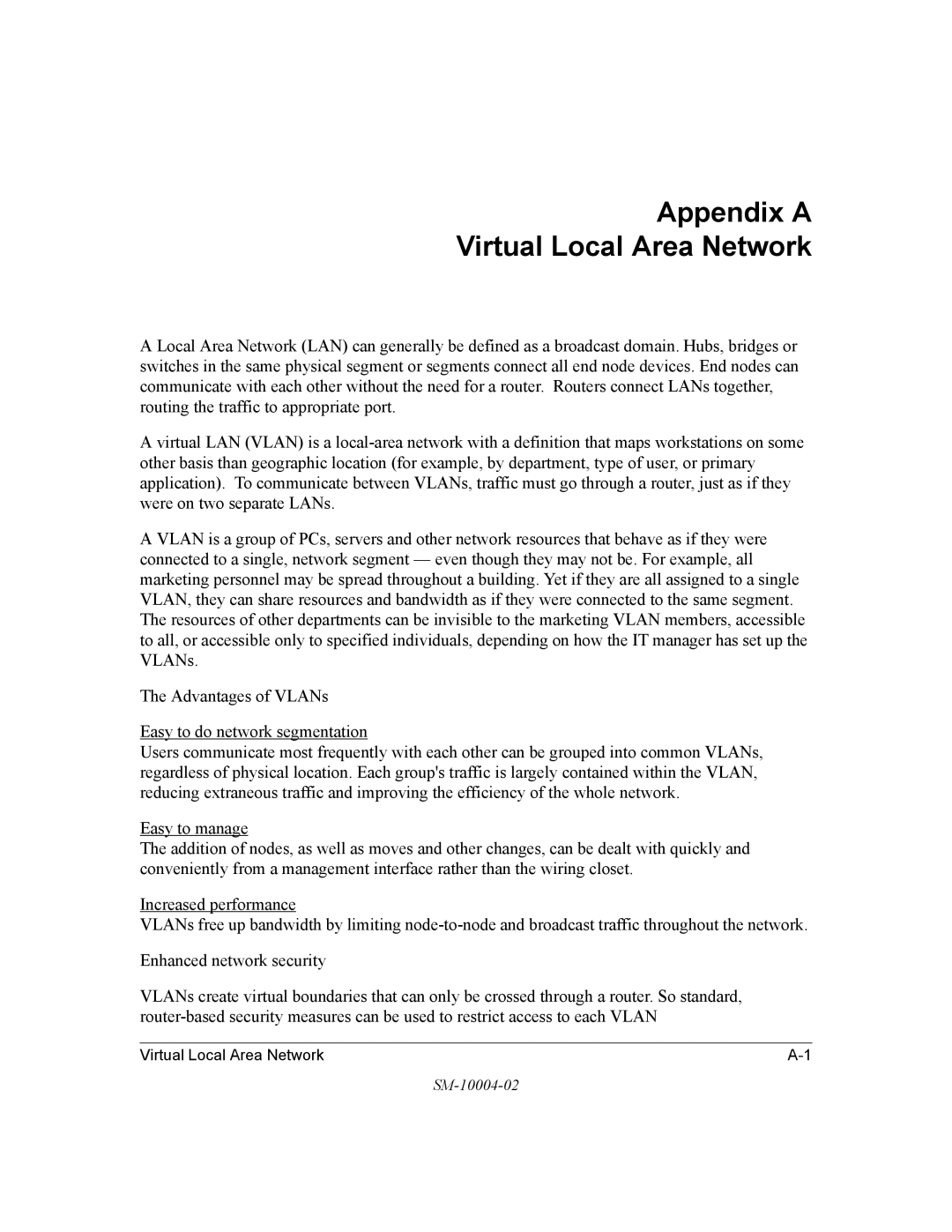Appendix A
Virtual Local Area Network
A Local Area Network (LAN) can generally be defined as a broadcast domain. Hubs, bridges or switches in the same physical segment or segments connect all end node devices. End nodes can communicate with each other without the need for a router. Routers connect LANs together, routing the traffic to appropriate port.
A virtual LAN (VLAN) is a
A VLAN is a group of PCs, servers and other network resources that behave as if they were connected to a single, network segment — even though they may not be. For example, all marketing personnel may be spread throughout a building. Yet if they are all assigned to a single VLAN, they can share resources and bandwidth as if they were connected to the same segment. The resources of other departments can be invisible to the marketing VLAN members, accessible to all, or accessible only to specified individuals, depending on how the IT manager has set up the VLANs.
The Advantages of VLANs
Easy to do network segmentation
Users communicate most frequently with each other can be grouped into common VLANs, regardless of physical location. Each group's traffic is largely contained within the VLAN, reducing extraneous traffic and improving the efficiency of the whole network.
Easy to manage
The addition of nodes, as well as moves and other changes, can be dealt with quickly and conveniently from a management interface rather than the wiring closet.
Increased performance
VLANs free up bandwidth by limiting
Enhanced network security
VLANs create virtual boundaries that can only be crossed through a router. So standard,
Virtual Local Area Network |
